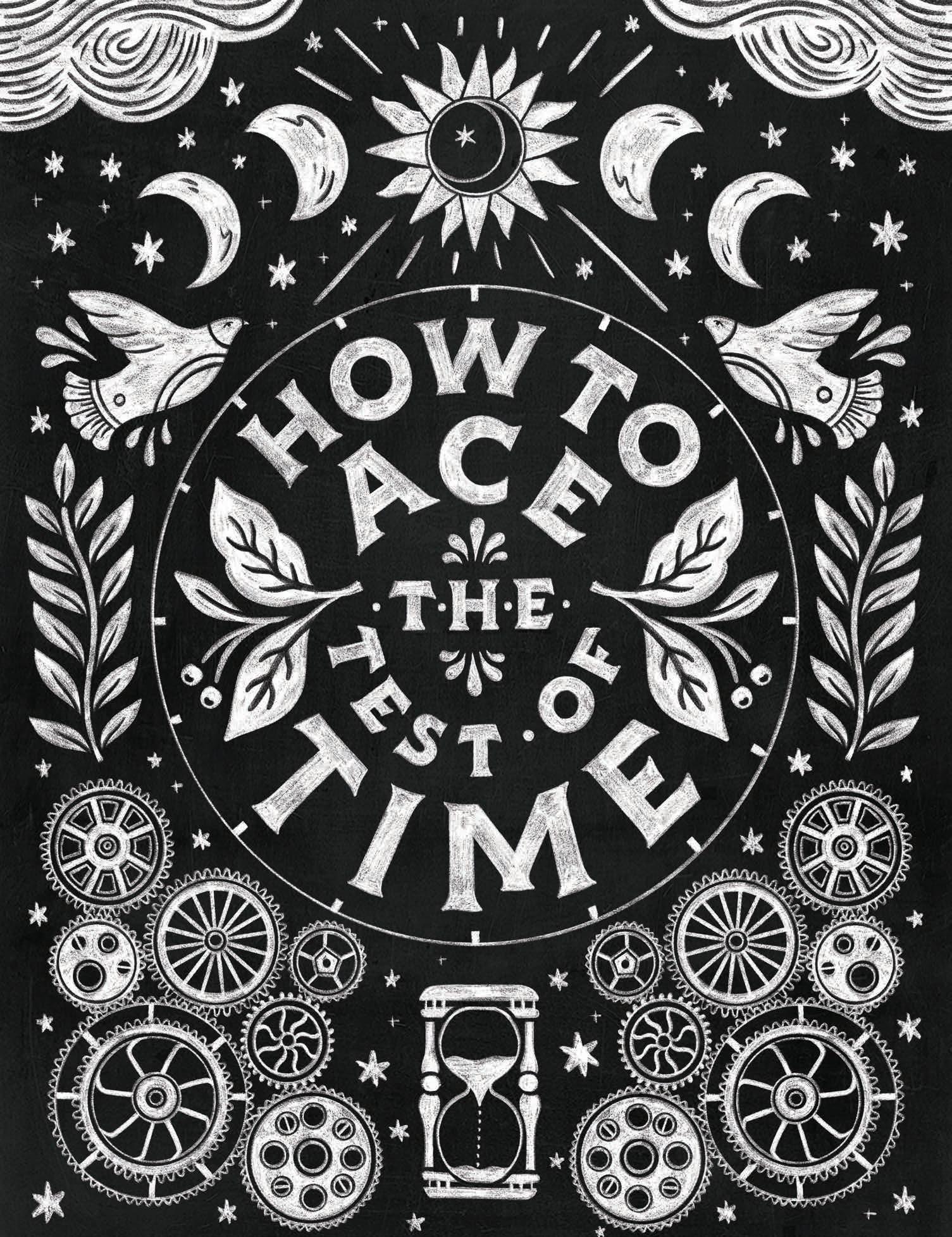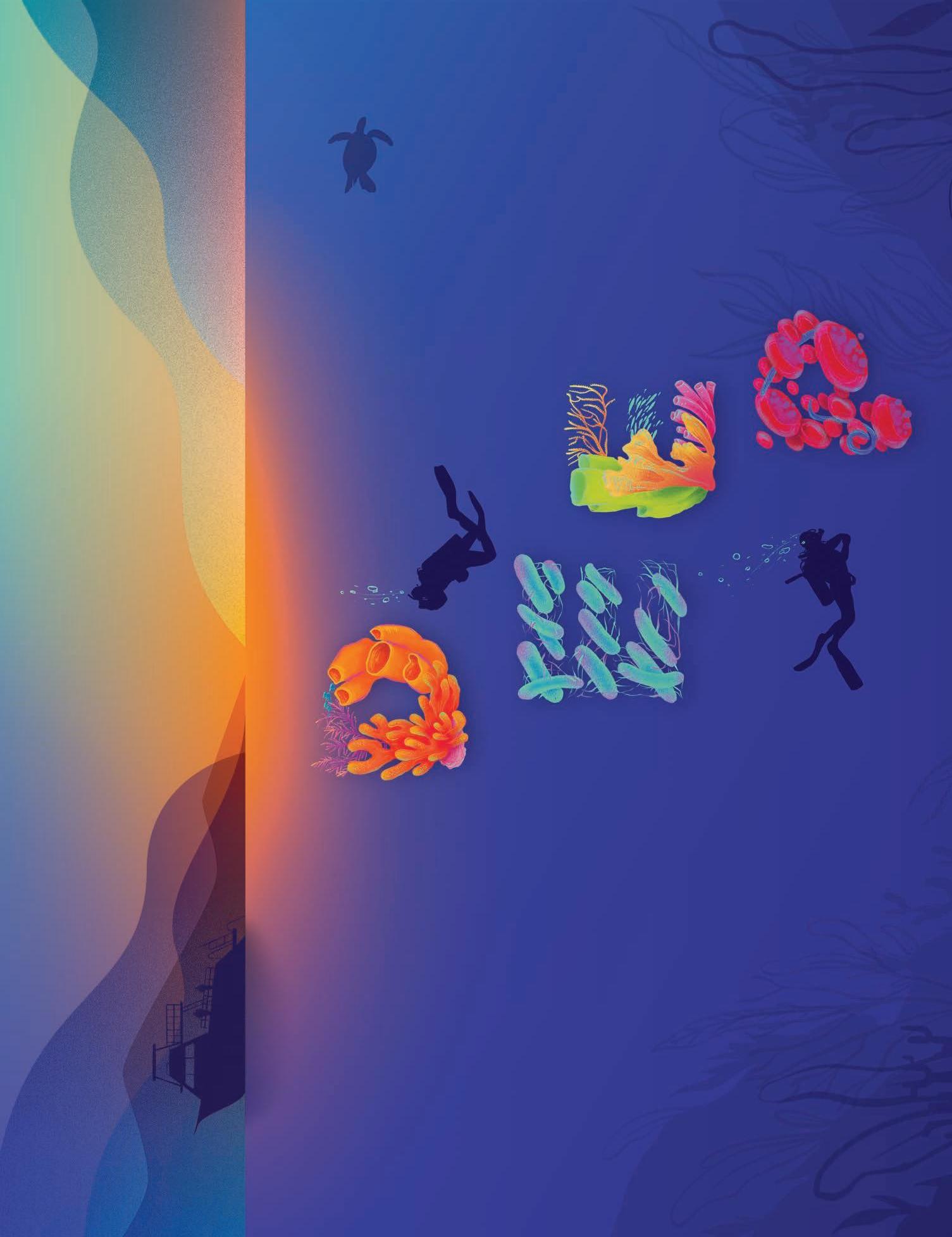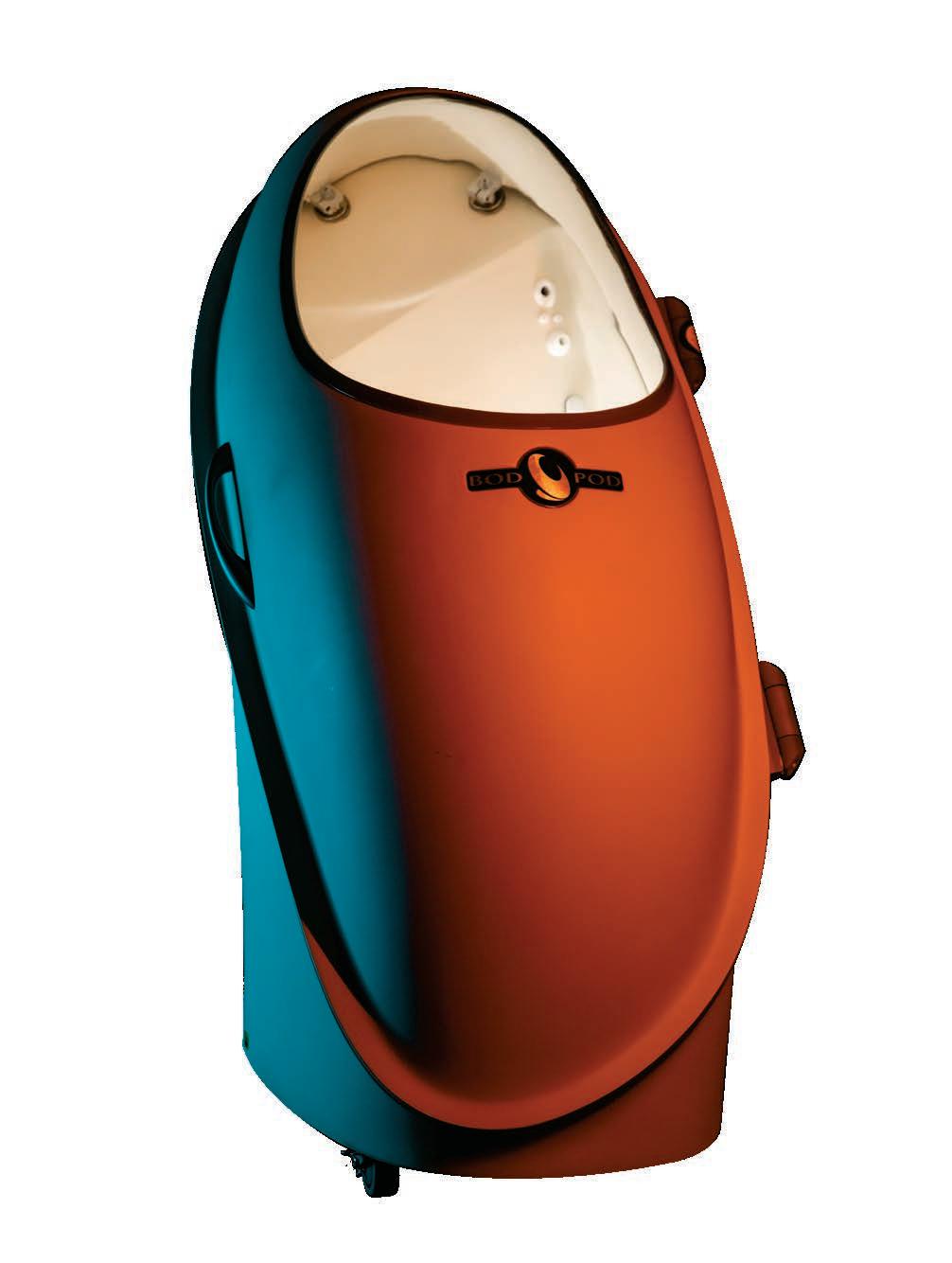
10 minute read
The Pope’s Meteor Man
As curator of the Vatican’s meteorite collection, Robert Macke ’10PhD combines science and faith to explore age-old questions of how and why we are here.
BY JENNA MARINA LEE
Advertisement
s Neil Armstrong and Edwin “Buzz” Aldrin landed on the moon July 20, 1969, Pope Paul VI watched the historic moment from the Vatican Observatory at Castel Gandolfo near Rome.
Shortly after touchdown, the pope transmitted a blessing to the American astronauts: “Honor, greetings and blessings to you, conquerors of the moon, pale lamp of our nights and our dreams! Bring to her, with your living presence, the voice of the spirit, a hymn to God, our Creator and our Father. We are close to you, with our good wishes and with our prayers.”
The moon landing epitomized the limitless potential of mankind, inspired our insatiable pursuit of knowledge, and furthered our awe and wonder with the universe. And in some ways, the moon landing was like coming home.
For the moon, the sun, the Earth, even humans — we are all connected by the very thing that made us: stardust.
“There is a tendency for us to see the mundane — which is literally the stuff of the Earth — and then there’s the stuff out there in space,” says Brother Robert Macke ’10PhD, a UCF physics alum who serves as the curator of the Vatican’s meteorite collection. “But the stuff out there and the mundane are really connected. We are part of the same universe. That’s one reason to understand and learn about it. It’s not just out there. It’s here [within us] too.”
efore COVID, the question I got most often from people when they learned I worked at the Vatican was, ‘When can I visit?’ ” Macke says with a laugh from his office at the observatory, located one floor below his residence.
While the general public may be surprised to learn the Vatican has an observatory, secular astronomers and scientists are very much aware of Catholics’ contributions to the field.
More than 30 craters on the moon and several asteroids are named after Jesuit scientists. The Gregorian calendar — which is nearly universal today — was developed by Jesuit priest Christopher Clavius. The originator of the Big Bang theory, Monsignor Georges Lemaître, was a priest as well.
“The origin of the universe is still shrouded in mystery, and the Vatican Observatory is a world-class operation employing some of the best people in the world who try to deal with these questions on a daily basis in a scientific way,” says Dan Britt, Pegasus Professor of astronomy and planetary sciences. “The better you understand reality, the better you can deal with the world and the universe — and the better you know your limitations but also your possibilities. What the scientists at the Vatican Observatory are interested in doing is increasing the human race’s possibilities.”
And yet, it isn’t just science alone that contributes to that quest. Inherent within scientific research and discovery are elements of awe and wonder; elements that are also inherent within faith and our connection to the universe.
Every phenomenon in the world can be subjected to a slew of scientific and rigorous questions that result in a pretty complete answer rooted in fact and reason. But those conclusions still do not always give us the full picture, says Bruce Janz, a UCF philosophy professor with a background in religious studies.
“You can know everything about childbirth in terms of the biology and medical practice, and that still doesn’t explain the wonder of it all,” Janz says. “It is possible to assign the causal questions to science and the questions of meaning to other domains. Philosopher Immanuel Kant tried to do something like that — he made a distinction between questions we can know scientifically, like the Earth revolving around the sun, and questions we can’t know scientifically but we can still think about, like what makes art beautiful? In other words, while scientific reason is crucial for everything, it might not be sufficient to reflect all human experience.”
Astronauts have been known to experience this dichotomy in space. It’s referred to as the overview effect. Through personal journal entries and interviews, astronauts of various nationalities and religious backgrounds have described the astonishment felt while gazing upon the Earth from above.
Inspired by this concept, Janz and a team of UCF researchers conducted a two-year study in 2011 to better understand the awe and wonder astronauts experienced.
Using an approach that combines psychological, neuroscientific and philosophical methods, they found that it was indeed possible to elicit experiences of the two emotions in a deliberate simulation. Their findings appear to show that awe and wonder are not necessarily just a transcendental experience, but a natural one, which means it is able to be studied.
“If they’re a natural experience, it doesn’t mean they’re not potentially religious,” Janz says. “It just means it has something to do with the structures of our brains. … Awe is about a set of new possibilities. Once you’ve exhausted your way of thinking about the world, awe suggests there’s a much bigger, much different and maybe exciting new way to look at the world.”
The study further explains that awe motivates wonder, and wonder has the potential to change one’s life. For instance, Janz asks, as we work toward making long-term space
travel possible — such as a mission to Mars — how could studies on awe and wonder help astronauts stave off their negative counterpart, dread?
“The beauty of science is that every time that we get answers, we end up with more questions,” Britt says. “All of us are working on little pieces of this puzzle. Some of us sometimes get a big chunk of that puzzle, but most of us just chip away — some successfully, some not so successfully — at these little pieces. I think the more we know doesn’t take away from the magic because there’s an infinite amount of awe and wonder about what’s going on around us.”
acke chips away at the unknown one small step at a time through his research with meteorites. His work is inspired by a Latin phrase that serves as the motto of the Vatican Observatory: Deum creatorem venite adoremus. Come, let us adore God the Creator.
“By doing science, we are appreciating the God that created this universe,” Macke says. “For us, science is a form of worship.”
Pope Leo XIII formalized the Vatican Observatory on a hillside behind the dome of St. Peter’s Basilica in 1891 — more than 250 years after the Catholic Church’s condemnation and imprisonment of astronomer Galileo Galilei for his belief that the Earth revolves around the sun. While the church eventually cleared Galileo’s name of heresy,
people remember the rift rather than the resolution.
The observatory, Macke says, has existed all these years as a sign to the world that the church does indeed support and commit itself to science.
“What we’re interested in doing here is science, and we want to do good science,” Macke says. “And what we have learned scientifically helps inform our perspective on the universe as a whole and the grandness of creation.”
The observatory has since moved to Castel Gandolfo, about 15 miles outside of Rome, where the skies are
not as affected by the city’s light. Forty years ago, the observatory established a second center, the Vatican Observatory Research Group in Tucson, Arizona.
Jesuits have run the observatory since 1907. Started by St. Ignatius of Loyola in the 1500s, the Society of Jesus, or Jesuits, is a religious order within the Catholic Church. Pope Francis became the first Jesuit named as the church’s leader when he assumed the role in 2013.
Jesuits most commonly work as university professors, pastors, high school teachers and chaplains but have even been Broadway actors, doctors, lawyers and of course, astronomers.
Macke entered the Jesuits in 2001 as a brother. He has taken the vows of poverty, chastity and obedience, but he has not pursued the path to priesthood.
“The way that I see it, there’s the call to religious life, which is the call to the vows of poverty, chastity and obedience within the life of the Jesuit community, and then there’s a separate call, the call to sacramental ministry of priesthood, to say Mass and do baptisms and perform those duties,” he says. “I felt the one call but not the other.” As for his other call, his deep interest marquis in space and science — just like his and devout faith — has been ingrained in him Catholic, donated from a young age. His father, who his private collection of served in the Air Force and was a roughly 1,000 meteorites, hoping trained geologist, had a fascination that the Vatican would start a natural with planetary sciences and hooked history museum. Macke’s interest with books, The museum never happened, photographs and slides from the but the observatory did, and it has Voyager and Viking missions. offered up its collection to scientists
Despite these two powerful globally for research purposes. By passions in his life, Macke didn’t studying meteorites, scientists are initially set his sights on working at able to understand more about the the Vatican. It’s as if the stars aligned origins of our solar system. to get him there. “Because the planets are big and
He fell into working with geologically active, they’re constantly meteorites after being plucked by making new stuff,” Macke says. “So Brother Guy Consolmagno, now the if you want to understand the really director of the Vatican Observatory, early days of the solar system, you to work with him at the Vatican in need something that preserves the 2004. The two first met in 1995 at data, and that’s what we have in an American Astronomical Society meteorites. They’re sort of like time meeting in Tucson. Consolmagno capsules.” and UCF’s In October, NASA’s Britt have been longtime “For us, science is OSIRIS-REx mission, for which UCF friends and collaborators, so a form of worship.” Professor of Physics Humberto Campins when a graduate is a co-investigator, student position successfully retrieved opened in Britt’s research lab in 2007, an asteroid sample in space. The Consolmagno suggested to Macke sample from the asteroid Bennu is that he apply for it. expected to be delivered to Earth
Macke completed his doctorate in 2023, and Macke’s previous in 2010 and finished his theology research on the thermal properties studies at Boston College in 2013. of meteorites will likely be an asset Soon after, he moved to Italy to start for the OSIRIS-REx team. his new role. “[Macke’s] work allows lots of
“They knew I was a capable other scientists to basically stand scientist, and a Jesuit who is a capable on his shoulders and go in a lot of scientist quickly gets on the Vatican different directions,” Britt says. Observatory’s radar,” Macke says. “The work that Bob has done is going
Macke’s day-to-day responsibilities to be critical in how they look at that include cataloging and maintaining sample and how they analyze the the observatory’s meteorite structure of Bennu.” collection, which includes more Despite the observatory’s long than 1,100 specimens representing history and contributions to science, all meteorite types. The collection many Americans believe faith and started in the early 1900s after science are generally at odds with Adrien-Charles de Mauroy, a French each other.
According to a 2015 survey conducted by the Pew Research Center, “the least religiously observant Americans are most likely to perceive conflict between religion and science. More than 70% of adults who seldom or never attend religious services viewed science and religion to conflict often, while half of adults who attend religious services at least weekly reported the same.”
“In our world today, there is an idea that you have to choose between faith and science — do one and exclude the other,” Macke says. “We are here to say no, you can do both. You can be a person of faith and a person of science.”
And that relationship just might provide a more complete understanding of our connection with the universe — and why both scientists and people of faith continue to ask questions about our origins, our existence and our purpose.
“There’s a Babylon 5 quote: ‘Faith and reason are the shoes on your feet. You can travel further with both than you can with just one,’ ” Macke says. “It’s not that the one is affecting the other per se. Science is a wonderful tool, but it’s a tool that is useful for understanding a certain aspect of reality, which is the way the physical world operates. Faith is a way of connecting with God and with others, but it is not something that tells us much about the physical world. So between the two of them, you help to develop a more complete picture of reality that one by itself just cannot provide.”










